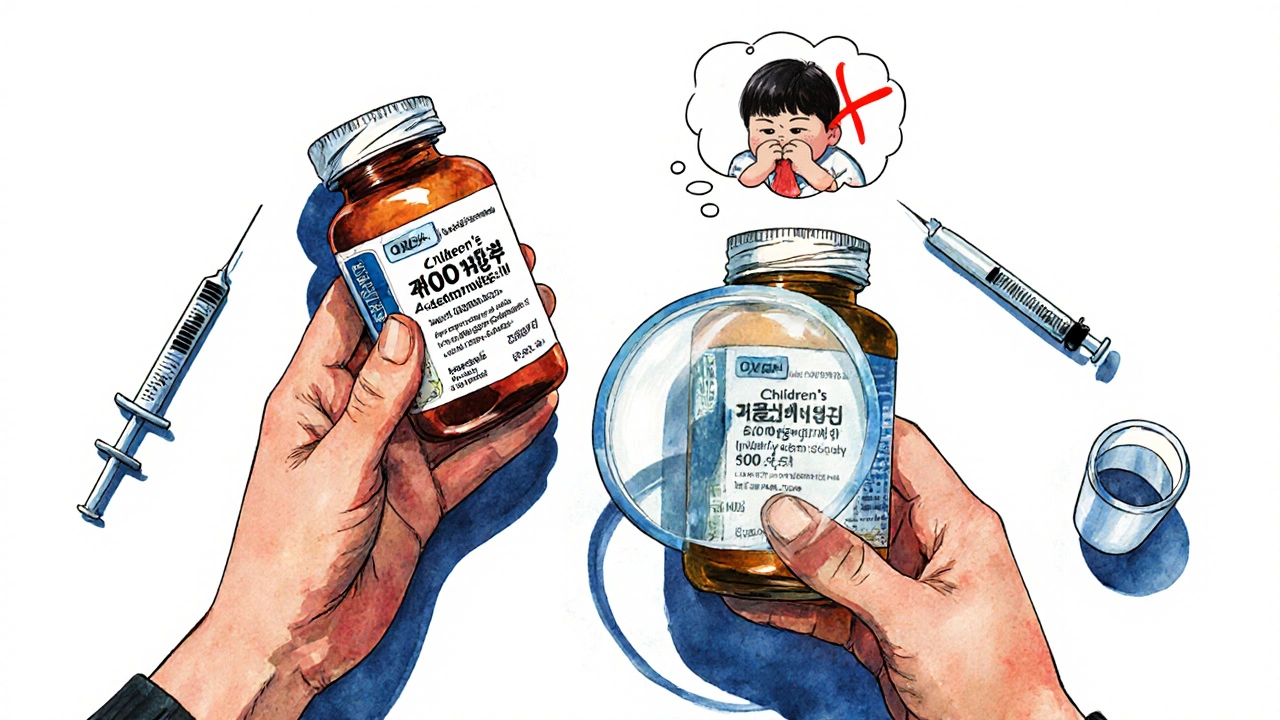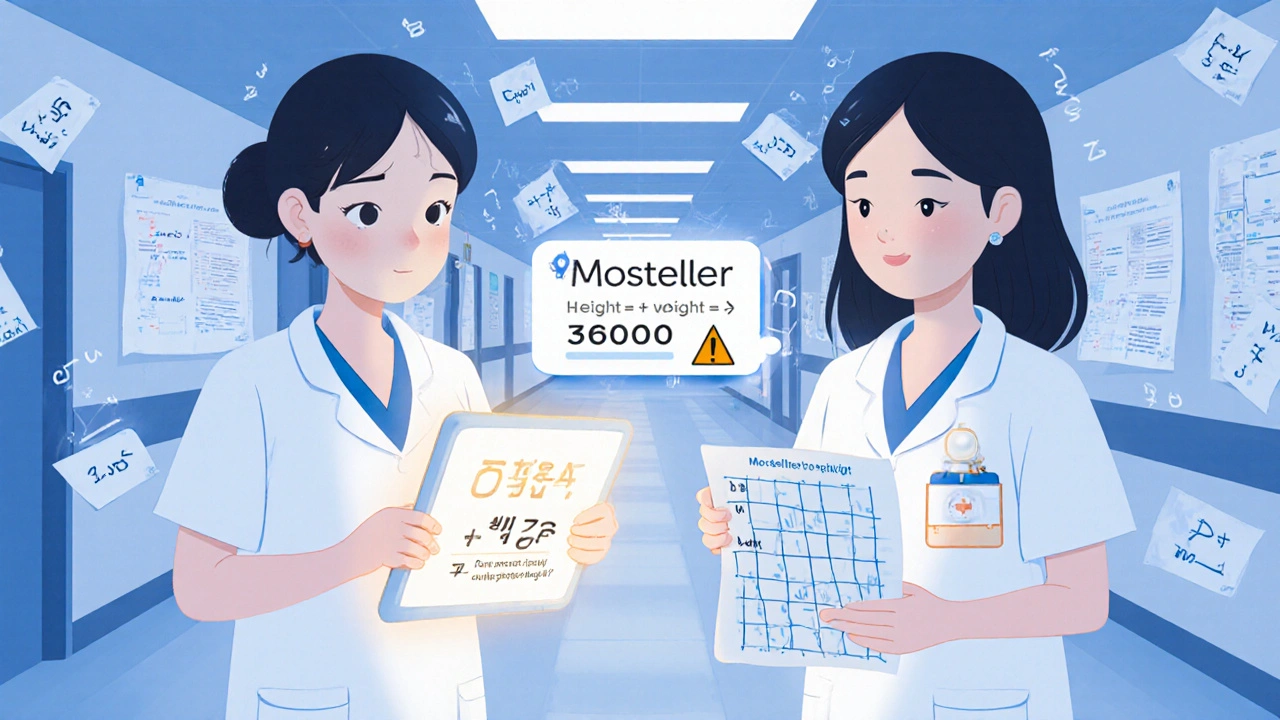Why Weight-Based Dosing Is the Only Safe Way to Give Medicines to Kids
When you give a child medicine, it’s not like giving it to an adult. A 5-year-old weighing 40 pounds and a 12-year-old weighing 100 pounds might both be called ‘children,’ but their bodies process drugs completely differently. Giving the same dose to both could mean one gets no benefit and the other ends up in the hospital. That’s why weight-based dosing isn’t just a recommendation-it’s the standard of care in every children’s hospital in North America.
Doctors don’t guess. They don’t use age alone. They don’t rely on ‘a spoonful for kids.’ They calculate every dose based on the child’s exact weight in kilograms. Why? Because a 2-year-old can weigh anywhere from 9 to 15 kilograms. That’s a 67% difference. If you dosed by age, you’d be giving a tiny child too little and a bigger child too much-both dangerous outcomes.
The Math Behind Safe Dosing: mg/kg Explained
Most pediatric medications are labeled with a dose in milligrams per kilogram (mg/kg). That means for every kilogram of body weight, the child gets a certain number of milligrams of medicine.
Let’s say the order is 15 mg/kg of amoxicillin, and the child weighs 22 pounds. First, you convert pounds to kilograms. The conversion is simple: divide pounds by 2.2. So 22 ÷ 2.2 = 10 kg. Then, multiply: 10 kg × 15 mg/kg = 150 mg total daily dose.
But wait-that’s the total. If the medicine is given twice a day, you divide: 150 mg ÷ 2 = 75 mg per dose. Now, if the amoxicillin suspension is 250 mg per 5 mL, you calculate volume: 75 mg ÷ (250 mg / 5 mL) = 1.5 mL per dose.
That’s three steps in one calculation: weight conversion, total daily dose, then volume per dose. Skip one step, and you’re off by a factor of 10.
Why Unit Conversion Errors Are the #1 Cause of Pediatric Mistakes
According to the Institute for Safe Medication Practices, 80% of pediatric dosing errors happen because someone mixed up pounds and kilograms. That’s not a typo. That’s a life-threatening mistake.
A 2021 case reported in the Journal of Pediatric Pharmacology and Therapeutics involved a 15 kg child who was given 10 times the correct dose of amoxicillin. Why? The nurse read the weight as 15 pounds-not kilograms-and calculated the dose based on that. The child developed severe vomiting, diarrhea, and dehydration. Hospitalized. Recovered. But it didn’t have to happen.
Hospitals now require weights to be entered in both pounds and kilograms in electronic systems. If you enter 15 lb, the system auto-converts to 6.8 kg and flags it if the calculated dose seems off. This isn’t fancy tech-it’s basic safety.

When BSA Matters More Than Weight
For most kids, mg/kg works perfectly. But for certain powerful drugs-like chemotherapy agents such as vincristine or immunosuppressants-doctors use body surface area (BSA) instead. Why? Because these drugs affect the whole body systemically, and BSA better reflects how the drug distributes across tissues.
The Mosteller formula is the standard: √(height in cm × weight in kg ÷ 3600). A child who is 97 cm tall and weighs 16.8 kg has a BSA of 0.67 m². The dose might be 1.5 mg/m², so 1.5 × 0.67 = 1.0 mg total.
BSA dosing is more complex and usually reserved for hospital settings. But if you’re caring for a child on chemo, this isn’t optional-it’s critical. One wrong decimal point can mean the difference between treatment and toxicity.
What You Must Never Ignore: Concentration and Formulations
Two bottles of children’s acetaminophen might look the same. But one says 160 mg per 5 mL. The other says 500 mg per 5 mL. That’s a 3-fold difference.
Parents often switch between infant drops and children’s syrup without realizing the concentration changed. A 2023 survey from St. Louis Children’s Hospital found that 65% of parental dosing errors came from misreading concentration labels.
Always check the label. Write it down. Compare it to the doctor’s order. If you’re unsure, call the pharmacy. Never assume. The same medicine in different bottles can have wildly different strengths.
Common Mistakes Even Professionals Make
Even trained nurses and doctors mess up. Here are the top three errors:
- Confusing mg/kg/day with mg/kg/dose-An order that says ‘20 mg/kg/d’ means total daily dose. If given twice daily, it’s 10 mg/kg per dose. Miss that, and you double the dose.
- Forgetting to convert pounds to kg-Still happens in 1 out of 5 cases in community clinics.
- Using outdated rules like Clark’s Rule-This old method (child’s dose = adult dose × weight in lbs ÷ 150) is inaccurate and no longer recommended. It was replaced for good reason.
Dr. Zwi Jacob from Renaissance School of Medicine says it plainly: ‘These dosages are intended as general guidelines ONLY.’ That means calculations are just the start. Clinical judgment matters. A 3-month-old with kidney issues? You don’t give the full dose, even if the math says to.

How Hospitals Keep Kids Safe: Double Checks and Tech
Hospitals don’t trust one person to do the math. They require two licensed staff to independently calculate and verify the dose-especially for high-alert drugs like morphine, insulin, or chemotherapy.
Electronic health records (EHRs) like Epic and Cerner now auto-calculate doses when weight is entered. A 2023 JAMA Pediatrics study showed this cuts calculation errors by 57%. Some systems even require you to enter weight in both pounds and kilograms to proceed. If you type 22 lb and forget to type 10 kg, the system won’t let you order the drug.
AI tools are coming next. Children’s Hospital of Philadelphia is testing algorithms that compare a calculated dose against thousands of past cases. If your child’s calculated dose for a 12 kg kid is 200 mg of a drug that’s usually capped at 80 mg, the system flags it before the nurse clicks ‘administer.’ Early results show 92% accuracy.
What Parents Need to Know
You’re not expected to be a pharmacist. But you are responsible for asking the right questions.
- ‘What’s the dose in mg/kg?’
- ‘Is this based on weight or age?’
- ‘What’s the concentration? Is this the infant drops or children’s syrup?’
- ‘How many times a day?’
- ‘Is this safe for my child’s age?’
Never give Benadryl to a child under 2 unless a doctor says so. Never give aspirin to a child-it can cause Reye’s syndrome. Never use adult medicine for a child, even if you cut it in half.
Keep the original bottle. Use the syringe that came with it. Don’t use a kitchen spoon. A teaspoon isn’t 5 mL-it’s often closer to 4.5 mL. And a tablespoon? That’s 15 mL. Way too much.
The Bottom Line: Precision Saves Lives
Pediatric dosing isn’t about being perfect. It’s about being careful. It’s about double-checking. It’s about asking for help when you’re unsure.
Weight-based dosing isn’t complicated. It’s just precise. And in medicine, precision isn’t optional-it’s the only thing that keeps kids safe.
When in doubt, call your pediatrician. Or call the pharmacy. Or call 911 if you think your child got too much. Better safe than sorry. Always.
How do I convert my child’s weight from pounds to kilograms?
Divide the weight in pounds by 2.2. For example, if your child weighs 33 pounds, 33 ÷ 2.2 = 15 kg. Always double-check this calculation. Many hospitals now require you to enter weight in both pounds and kilograms to prevent errors.
Can I use age instead of weight to dose my child’s medicine?
No. Age-based dosing is outdated and unsafe. Two children of the same age can weigh very different amounts. A 3-year-old might weigh 12 kg or 20 kg. Giving the same dose to both could result in underdosing or overdose. Weight-based dosing is the only reliable method.
What if the prescription says ‘mg/kg/d’?
That means milligrams per kilogram per day-the total daily dose. You must divide it by how many times the medicine is given each day. For example, if the order is 20 mg/kg/d and it’s given twice daily, each dose is 10 mg/kg. Always ask the prescriber to clarify if it’s not clear.
Why are there different concentrations of children’s acetaminophen?
In the past, infant drops were 80 mg per 0.8 mL and children’s syrup was 160 mg per 5 mL. Now, most products are standardized to 160 mg per 5 mL for both. But older bottles may still exist. Always check the label. Confusing the two has caused serious overdoses. If you’re unsure, ask the pharmacist.
Is it safe to use a kitchen spoon to measure liquid medicine?
Never use a kitchen spoon. They’re not accurate. A teaspoon can hold anywhere from 3.5 to 7 mL. Always use the syringe or dosing cup that came with the medicine. If you lost it, ask the pharmacy for a new one-they’ll give it to you for free.
What should I do if I think I gave my child the wrong dose?
Call your pediatrician immediately. If you can’t reach them, call Poison Control at 1-800-222-1222 (in the U.S.) or your local emergency number. Do not wait for symptoms to appear. Early intervention can prevent serious harm.


Robin Johnson
November 24, 2025 AT 20:35Always use the syringe. Always.
Nikhil Chaurasia
November 25, 2025 AT 22:24Holly Schumacher
November 27, 2025 AT 00:02Also-why is there still a 160mg/5mL vs 80mg/0.8mL confusion? That’s not a typo, that’s negligence.
Michael Fitzpatrick
November 28, 2025 AT 04:59It’s not about being a perfect parent. It’s about being a careful one. And that’s something we can all do. Just slow down. Read the label. Call the pharmacy. It’s not a bother-it’s a duty.
Shawn Daughhetee
November 30, 2025 AT 01:40Justin Daniel
December 2, 2025 AT 00:27Also, if you’re ever unsure? Ask. Don’t guess. Don’t Google it. Call the pharmacy. They’re there to help. Seriously.
Melvina Zelee
December 3, 2025 AT 00:30we all make mistakes. what matters is we learn and stop pretending we know it all.
ann smith
December 4, 2025 AT 05:01And yes, I use the syringe. Always. No spoons. No guessing. No 'it’s probably fine.'
My daughter is 4 and I treat every dose like it’s her last. Because it might be.
Julie Pulvino
December 4, 2025 AT 20:28Patrick Marsh
December 5, 2025 AT 11:50Mark Williams
December 7, 2025 AT 03:04Also-stop using kitchen spoons.
Ravi Kumar Gupta
December 8, 2025 AT 17:44Rahul Kanakarajan
December 10, 2025 AT 12:44New Yorkers
December 10, 2025 AT 23:34Robin Johnson
December 11, 2025 AT 14:27